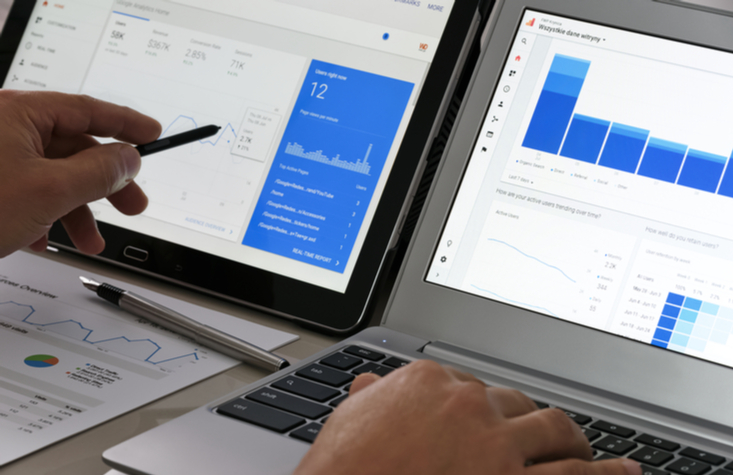Why Google Analytics 4 Won't Mean a Thing if You're Not Measuring the Right Thing
While GA4 promises to take your measurements to a new level – we’re encouraging businesses to not get sucked into the 'more' mentality when it comes to measurement, but to take the time to review whether they’re measuring the right thing and identifying what they need to measure based on current business objectives.

By Shell Epton, Head of Analytics - Code Computerlove
The introduction of GA4 has got many SEOs, analysts and marketers extremely excited, and has driven an increased focus on measurement and analytics as a whole.
With GA4 you can measure far more than with Universal Analytics (UA), adding new layers onto those pleasing-to-see metrics; the metrics that the CEO feels comfortable with or that indicate when teams need to panic, drop everything and address the problem with more money and resources.
But actually, the introduction of GA4 has the potential to waste even more money for many businesses, because they’re simply measuring the wrong thing.
They’re likely to lift and shift – continuing to measure things they’re comfortable with, rather than stepping back to actually review what they need to measure; to measure the things that tell them how they can change to transform.
So while GA4 promises to take your measurements to a new level – we’re encouraging businesses to not get sucked into the more mentality when it comes to measurement, but to take the time to review whether they’re measuring the right thing and identifying what they need to measure based on current business objectives.
Measure the Right Thing, Not Everything
With GA4, Google has attempted to help marketers to improve their insights from data and increase ROI.
But the temptation with a move to GA4 will be to just lift and shift. Keep the same measurements – but maybe just add a few more using the new property’s features. The reality is the KPIs that a business is measuring were put in place years ago.
At Code, we've found that many of the organisations we work with have never done a measurement audit since launching their digital platform, even though it may have had many iterations.
What’s being measured hasn’t been given the same thorough scrutiny as deciding what digital techniques to deploy in order to reach and satisfy audiences. The best practice is actually to review metrics every 12 to 18 months.
And even when apps or new touchpoints have been added, often the same and ‘typical’ metrics are measured as prescribed by what can be quantified in those channels.
But while many businesses now have multiple platforms and channels – it doesn’t mean they can and should be measured in the same way.
Getting Started with a Measurement Framework
The first step to knowing whether you’re measuring the right thing or could be measuring less is to do a measurement workshop.
The overall premise is to ask; do your KPIs still reflect your business and the customer journey?
Supporting this goal is to ask if the measurement you do reflects the real objectives of the platform or customer journey that’s relevant to today’s consumers.
The process begins with a stakeholder session. Part of reviewing how businesses measure is to acknowledge that data is a team sport. By working alongside all of your stakeholders and your team – not just looking at numbers – data analysts get a complete picture of a business and its digital estate, including its pain points.
This also ensures that the knowledge being shared is that of the current team – which again could have changed since original measurements were put in place. Stakeholder interviews can help to define the vision, which is step two of the process.
It’s then important to take a deep dive into what customers are actually doing – not just looking at what the data is telling us. And to map these actions against what the business wants customers to do – to see if there is a disconnect.
And consider; not all platforms are designed to do the same thing – so it may seem obvious, but this means that they shouldn’t all be measured in the same way.
Results of the workshop will then enable teams to create a Measurement Framework.
Within the framework, we account for what influences changes in metrics to add a ‘human’ element to the measurement. There are many things that businesses can’t actually do anything about that impacts conversions from seasonality to major events. The framework will allow organisations to cross-check against these.
Often journeys are not straightforward and not static, and frameworks help you to measure successfully so that decisions can be made based on true insight on how to drive positive digital change.
The Metrics that Matter
If your organisation doesn’t understand or trust data, you won’t truly understand your customers. Too often, the data is unreliable. A web analytics tool might say one thing, while your back-end operational dashboard says something else.
By auditing your data analytics and connecting data sets, organisations can answer big questions about their customers and operations and make better decisions with confidence.
So before jumping into GA4 – consider first the importance of measuring the right thing, not everything.